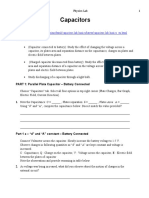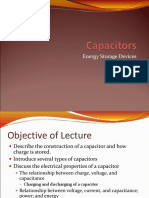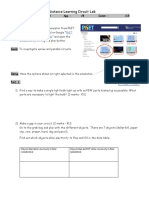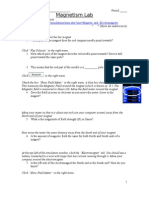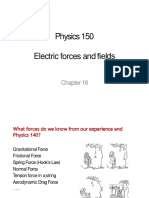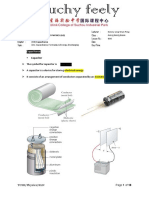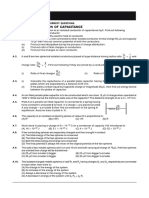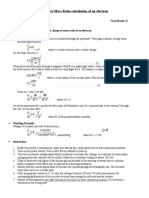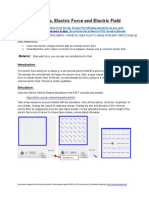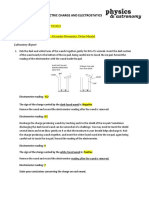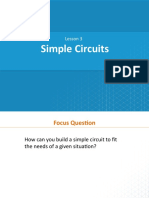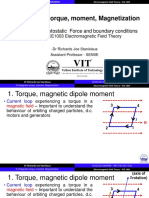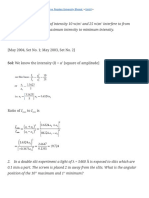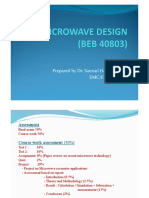0% found this document useful (0 votes)
367 views6 pagesLab Capacitance
This document contains instructions for a lab on capacitance. The lab involves using an online simulation to explore how changing various capacitor parameters affects measurements of capacitance, electric charge, potential energy, and electric field. Parameters that are varied include the dielectric constant, plate area, distance between plates, and applied voltage. Real capacitors are also used to draw a circuit diagram. The document provides questions to answer about how the different parameters affect the capacitor measurements.
Uploaded by
Johan Jr RenteriaCopyright
© © All Rights Reserved
We take content rights seriously. If you suspect this is your content, claim it here.
Available Formats
Download as PDF, TXT or read online on Scribd
0% found this document useful (0 votes)
367 views6 pagesLab Capacitance
This document contains instructions for a lab on capacitance. The lab involves using an online simulation to explore how changing various capacitor parameters affects measurements of capacitance, electric charge, potential energy, and electric field. Parameters that are varied include the dielectric constant, plate area, distance between plates, and applied voltage. Real capacitors are also used to draw a circuit diagram. The document provides questions to answer about how the different parameters affect the capacitor measurements.
Uploaded by
Johan Jr RenteriaCopyright
© © All Rights Reserved
We take content rights seriously. If you suspect this is your content, claim it here.
Available Formats
Download as PDF, TXT or read online on Scribd
/ 6




